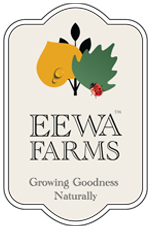Harvesting Abundance: The Nutritional Bounty of Hydroponic Vegetables
Harvesting Abundance: The Nutritional Bounty of Hydroponic Vegetables
In the realm of hydroponic agriculture, vegetables flourish in a nutrient-rich aquatic environment, offering a cornucopia of benefits for both the palate and the planet. Let’s delve into this verdant world, where innovation meets sustainability in a symphony of flavor and freshness.
Hydroponically grown vegetables boast nutritional advantages that are hard to ignore. According to a study published in the Journal of Food Composition and Analysis, hydroponic lettuce can contain significantly higher levels of certain vitamins compared to conventionally grown lettuce. For instance, hydroponically grown lettuce was found to have up to 50% more Vitamin C than its soil-grown counterparts (Gonnella et al., 2015).
The growth process of hydroponic vegetables is a marvel of efficiency. Research has shown that hydroponic systems can produce yields up to 30% faster than traditional soil farming methods (Resh, 2013). By delivering nutrients directly to the plant roots through a water-based solution, hydroponic cultivation minimizes resource wastage and enhances crop productivity.
Moreover, hydroponically grown vegetables are renowned for their exceptional taste and texture. With precise control over environmental factors such as temperature, humidity, and nutrient levels, growers can cultivate crops that are consistently flavorful and crisp (Sonneveld and Voogt, 2009). This meticulous management of growing conditions ensures a superior sensory experience for consumers, elevating the culinary appeal of hydroponic produce.
From leafy greens like lettuce and kale to succulent tomatoes and aromatic herbs, hydroponic vegetables offer a tantalizing array of flavors and nutrients. Embracing this innovative approach to farming not only enhances our culinary experiences but also fosters a more sustainable future for generations to come. In the delicate dance between nature and technology, hydroponic agriculture emerges as a beacon of hope—a nourishing journey from seed to harvest, enriching both body and soul.
References:
Gonnella, M., Renna, M., Giordano, M., D’Egidio, M. G., & Santamaria, P. (2015). Quality of ready-to-eat mixed leaf salads stored in high-oxygen and low-oxygen controlled atmosphere. Journal of Food Composition and Analysis, 43, 79-86.
Resh, H. M. (2013). Hydroponic food production: A definitive guidebook for the advanced home gardener and the commercial hydroponic grower (7th ed.). CRC Press.
Sonneveld, C., & Voogt, W. (Eds.). (2009). Plant nutrition of greenhouse crops. Springer Science & Business Media.

